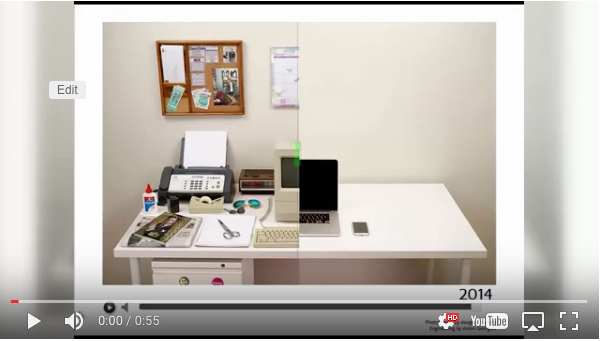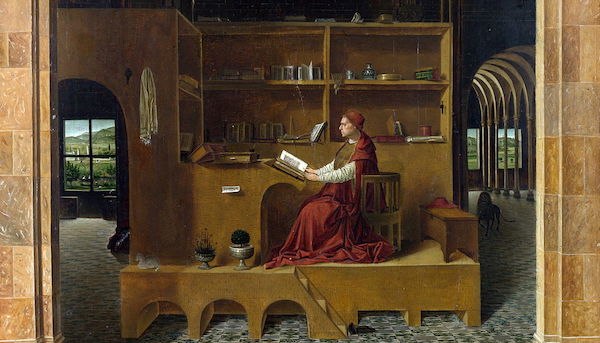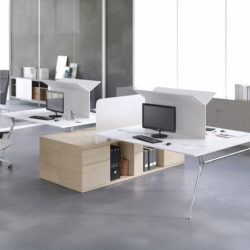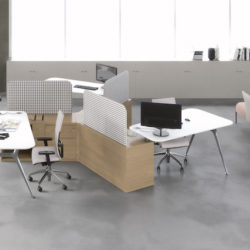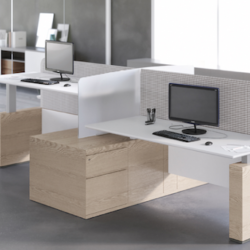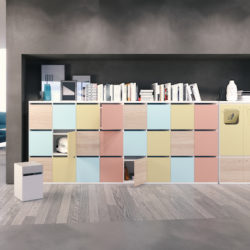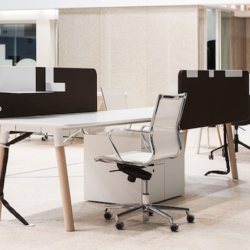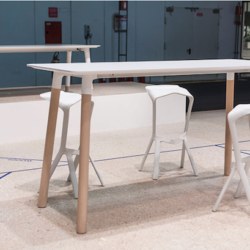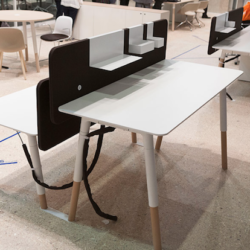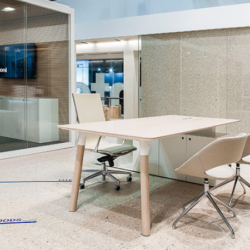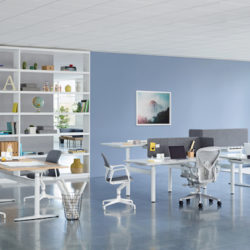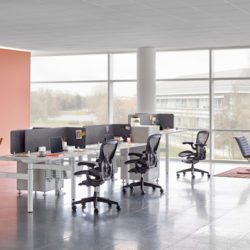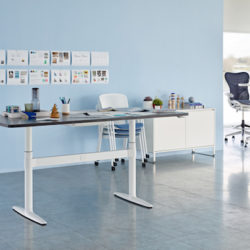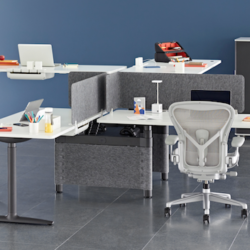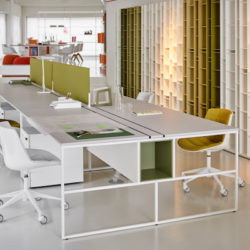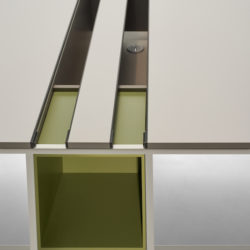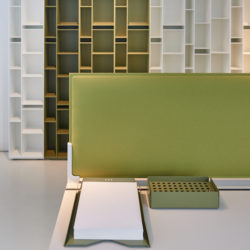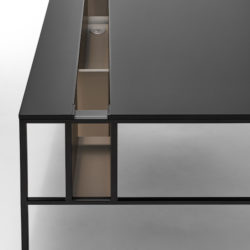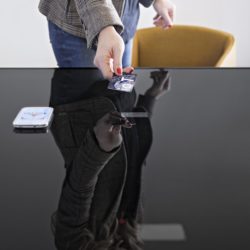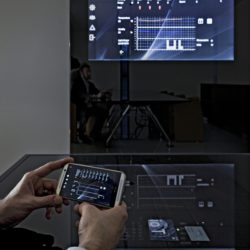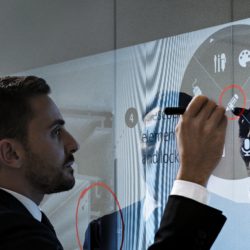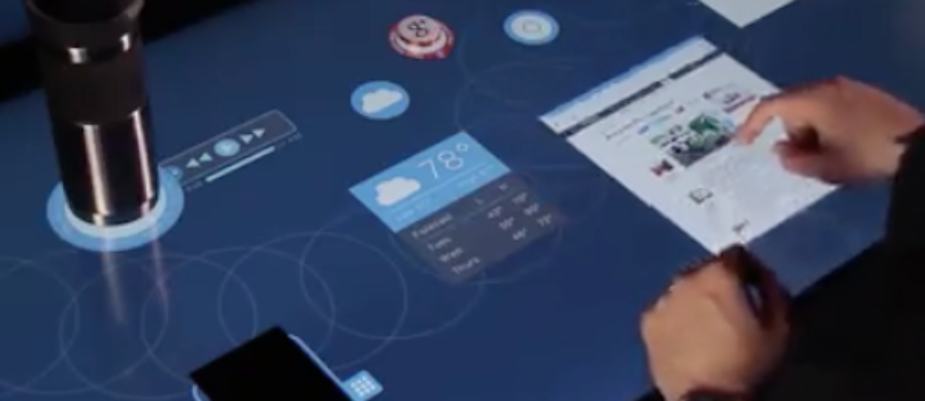
Can a product design make a desk “groundbreaking”? While I’m asking myself that question, the video, posted by Curioctopus, about the desk of the future enabling us to perform any task by using very simple intuitive gestures is raging on Facebook. But maybe that’s not the only possible way to breathe new life into a furniture unit, that still remains the archetype of the office.
The video picture of the lively and interactive worktop by Curioctopus is the opposite of the emptying out shown in that “Evolution of the Desk” posted a couple of years ago.
In the hybrid domain of the Workplace 3.0, the desk should still be an analogue unit made for comfort or should it turn into a digital object?
The first outlook, generated by Internet of Things, refers to an intangible desk, to a smart and interactive technological tool, provided with information systems, where what matters is software design rather than industrial design.
The second concept means a tangible furniture unit, increasingly pleasant and versatile.
A comfortable, ergonomic, equipped, customized piece of furnishing … maybe inspired by the San Girolamo’s Studio painted by Antonello da Messina …
The distintive features are fittings that become an integral part of the system and the perceptive and design components, in particular colours, finishes and materials. Last but not least, the functional performance: customisation, both aesthetic and anthropometric; sit-stand, easy wire management and installation, versatility and disposition to fit different requirements and jobs and space organization.
WOW selected some of the more innovative desk systems launched at Workplace 3.0 and during Milano Design Week.
Estel, I Pianeti – Evolution.
A versatile and integrated desk system that allows to create different and extremely customized configurations for the workplace. From the single desk to the 3 or 4 cluster stations, available with sit-stand with height adjustment devices harmoniously inserted inside the wooden frame. The range of accessories also includes Lockers that houses personal boxes and Chairboxes that accompany the user moving in the different working areas.
Fantoni, Woods, design by Metrica.
The key feature of the design is the use of solid beech or oak wood that gives a natural mood to the system. It includes large executive and meeting tables, fixed office desks and sit-stand workstations.The sloped design of the leg gives the table a simple yet sophisticated look, comprising two telescopic cylindrical elements, one of which is in wood. Inside it is an electronic mechanism that effortlessly adjusts the height of the table top.The table’s electrical connections are hidden under the top, while the modesty panel can be fitted with storage accessories and with a USB socket for recharging electronic devices.
Herman Miller, Atlas Office Landscape, design by Tim Wallace.
A work system which brings together height-adjustability and collaborative working in one elegant solution. The ‘no beam’ structure, frees the workspace from clutter so people can sit or stand in comfort, adapting postures to their activities. The desk system includes sit-stand height-adjustable desks, screens, tables and storage elements to create a whole office environment. “To me the problem wasn’t in creating a single desk, there are plenty of examples of those- the designer explains-The real challenge comes when that single desk needs to be multiplied and then fitted into a space. I saw the opportunity for a system that really benefitted the working environment, both today and in the future.”
MDF Italia, 20.venti, design 967.
The technical challenge starts from the use of a slender frame generated by a 20×20 profile. The collection includes both individual tables and double workstations, which can be aggregated, and a wide selection of screens and accessories. An intentionally iconic system that renounces unidentifiable stylistic solutions.
io.T (intelligence of Tecno), design studio Gtp and other partners.
io.T is a smart system of connected furnishings with the capacity for integration with IT systems, devices and hubs, designed to offer information and real time solution to owners and managers of smart buildings and end users. A project combining the tangible, analogue world with the intangible world of digital through a smart furnishing system designed to improve the well-being of the end user. The missing link that transforms users into recognized people.
Tecno picks up on studio Gtp’s intuition and creates a working team of experts such as TIM, STMicroelectronics, Digitronica.it, Ilevia, InfoSolution and Videoworks who have worked for the past two years on developing and optimizing the io.T furnishing system.

